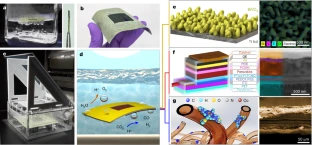Nanowerk August 17, 2022
Floating ‘artificial leaves’ that generate clean fuels from sunlight and water could eventually operate on a large scale at sea. Current techniques for depositing photoelectrochemical (PEC) artificial leaves limit their scalability, whereas fragile and heavy bulk materials can affect their transport and deployment. Researchers in the UK fabricated lightweight artificial leaves using lead halide perovskite photocathodes deposited onto indium tin oxide-coated polyethylene terephthalate achieving an activity of 4,266 µmol H2 g−1 h−1 using a platinum catalyst, whereas photocathodes with a molecular Co catalyst for CO2 reduction attained a high CO:H2 selectivity of 7.2 under lower (0.1 sun) irradiation. The corresponding lightweight perovskite-BiVO4 PEC devices showed unassisted solar-to-fuel efficiencies of 0.58% (H2) and 0.053% (CO), respectively. They deposited the leaves on a river to show that they can convert sunlight into fuels as efficiently as plant leaves. This leaf-like PEC device bridges the gulf in weight between traditional solar fuel approaches, showcasing activities per gram comparable to those of photocatalytic suspensions and plant leaves. The systems may enable open-water applications, thus avoiding competition with land use…read more. TECHNICAL ARTICLE

The thin perovskite-BiVO4 artificial leaf and its components. Credit: Nature volume 608, pages518–522 (2022)